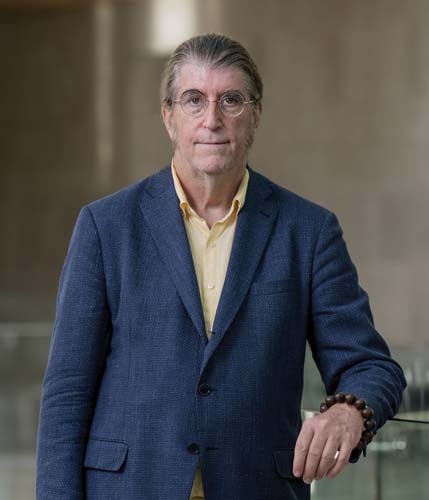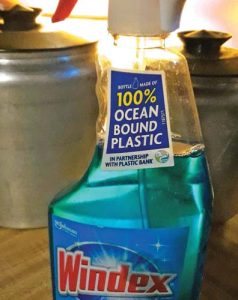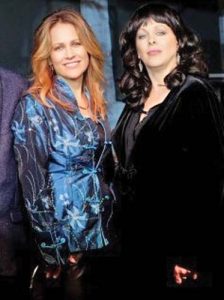the metro | Apparently, some developer is building an immense floating plastic island in an ocean. I thought those huge non-biodegradable conglomerations in the sea were an environmental disaster, but our Windex spray bottle says, “Made of 100% Ocean Bound Plastic.” Somebody’s owning up to it, by golly, and it might as well be SC Johnson, one of the world’s biggest consumer-products companies, in partnership with Plastic Bank. Well, maybe somebody like Disney is building a huge destination for cruise ships, a theme park with nothing to see on the horizon but sea. Hey, maybe they’ll call it Waterworld, even though that’s the name of what some consider the worst movie ever made. Of course, much of the foregoing is just ridiculous: A. The movie isn’t all that heinous, and B. There are tons of tons of floating plastic depriving oxygen and blocking the sun from sea life all over the world. An immense patch of mostly plastic garbage, larger than Texas (three times the area of France), is floating in the Pacific. Actually, two. There’s a Great Pacific Garbage Patch in the east off California and another in the west off Japan. So, Windex aims to make it worse? Of course not, but a little tweak in the wording on the bottle would have made it as clear as a window that’s just been cleaned with the stuff. SC Johnson and other companies are paying coastal communities to pick up plastic from beaches before it’s washed out to sea. More than 3.2 billion plastic bottles alone have been collected since 2013. To find out more about what’s being done to help control ocean-bound plastic, visit plasticbank.com.
grand center
They sure look and sound like Ann and Nancy Wilson of Heart, and they play their hearts out. In reality, however, they’re Heartless—a Heart tribute band from Tinley Park, Illinois. The spittin’ images of the classic rockers, they’ll be playing along with the boys for the first in a series of concerts to benefit Gratitude House, the first women’s sober-living residence planned for St. Louis County. The show is 7 p.m. Saturday, Nov. 12, at the Grandel Theatre in the Grand Center Arts District. Tickets are available through the Grandel or Metrotix. Veteran rocker Jimmy Warren opens the show. Gratitude House is being established to help women begin a new life, free from drugs and alcohol. In a comfortable, loving, supportive, encouraging and understanding environment, women will be free to share their pains and frustrations along with their hopes and determination to heal. Addiction experts say that, especially for women, a tremendous stigma and deep shame surrounds this debilitating disease, which makes it difficult to seek qualified professional help. Betty Ford, the former first lady, discussed her dependency on alcohol and painkillers with candor, which made it easier for others, especially women, to admit to having similar problems. Ford said, “Society expects a lady to drink, but not to have a drinking problem.” Experts say there is dire need for this safe, dignified, and comfortable sober-living home for women suffering from addiction. Gratitude House will accommodate eight residents, who will be supervised by a house mother and responsible for rent. To learn more, visit gratitudehousestl.org.
downtown west
Our new major league soccer team is having hella problems, it seems, especially with its zillion-dollar stadium. But first of all, even though they didn’t ask any of us here at T&S, at least one of us believes that ‘St. Louis CITY SC’ is a really lame name. Yes, we have to be careful with naming teams these days, but what would be wrong with naming the team the ‘St. Louis Archers’? I mean, we already have this great big Arch on the Riverfront. Alas, methinks that ship has sailed. Meanwhile, the stadium itself is in a world of hurt, not the least of which is with its own name, since health care giant Centene has so ignominiously pulled out of its 15-year naming agreement. I’m sure nobody will agree to call it ‘The Stadium with No Name,’ nor agree to a sleepy rally song by the 1970s soft-rock group America, so let’s reach out across the prairie to Archer-Daniels-Midland, the ag giant with headquarters in Chicago and ADM plants throughout the extremely furthest reaches of the Metro-East: ‘Archer’s House’ has a nice ring, doesn’t it? ADM could probably even help figure out how to get those irksome electrical problems fixed in time for pro play to begin here next year. If it’s as simple as running some extension cords a few blocks, I’ll see what our lovely and talented dental professional has to say about it. Karen J. Harris, D.M.D, has her office at Locust and 20th streets and has been one of my wife’s best friends for more than 40 years. I’m pretty sure Dr. Harris would leave her lights on for the good of the StL sports scene, but to be sure, maybe I should have Cate ask her.
notable neighbors
washington university
Upon awakening Monday, Oct. 10, Philip H. Dybvig, Ph.D., a Wash. U professor for more than 30 years, wasn’t exactly sure why messages were stacking up on his phone. Soon enough, the banking and finance expert found out that he is one of three to share the 2022 Nobel Prize in economic sciences. But along with joy and a sense of triumph, another realization formed, he says. “The next two months are going to be busy … and stressful!” The Nobel medals and accompanying monetary awards—in kronor, which comes to about $300,000 each for Dybvig and his fellow laureates—are to be handed out Dec. 10 in Stockholm, Sweden. Dybvig, 67, and his former Yale classmate, Douglas Diamond of the University of Chicago, were selected for their seminal 1983 paper introducing an economic model explaining why banks are subject to runs. Also sharing the award is Ben S. Bernanke, the former Federal Reserve chair, who the same year published a paper explaining how bank failures can propagate a financial crisis rather than become a frightening result of it. Cited more than 11,000 times, the Diamond-Dybvig model has become synonymous with the study of banking, financial crises and liquidity, demonstrating that bank runs all share the same DNA, despite different circumstances and triggers for such panics. “Our model showed how to view bank runs as rational behavior,” Dybvig says. “If you think everyone else is going to take out their money, you’re going to take out your money, and that’s rational behavior.” When Diamond and Dybvig created their model, there hadn’t been a U.S. bank run since the Great Depression. When they first presented the paper, some in the audience scoffed, believing bank runs were a thing of the past. That is, until the 2008 financial crisis—subprime mortgages were the culprit; huge lender Lehman Bros. went bankrupt. “The model helped us to understand what we should be doing,” notes Dybvig. “It gave policymakers a framework for how to think about what was going on.” While providing an economic rationale for federal deposit insurance, the model became a workhorse that reshaped banking research on financial stability. Dybvig, now one of 26 Nobel laureates affiliated with Wash. U, is the second faculty member to receive the Nobel in economics, the first being Douglass C. North in 1993. Dybvig previously taught at Princeton and was tenured at Yale. And if ‘publish or perish’ is an ongoing source of postgraduate dread, Dybvig really should be under less stress for the time being: He has published two textbooks and more than 35 journal articles. The economics prize was established and first awarded in 1969, which helps explain why there was a 39-year lag between the paper’s appearance and the Nobel acknowledging it. “They want to recognize the older candidates while there’s still time,” says Dybvig, who only wishes that the late Steve Ross, his Ph.D. advisor at Yale, could have been here to see it. “He should have had a Nobel Prize. He would have been happy to see one of his students receive this.” Does he think his own students are likely to pay closer attention to him from now on? “They’re over the moon!”











